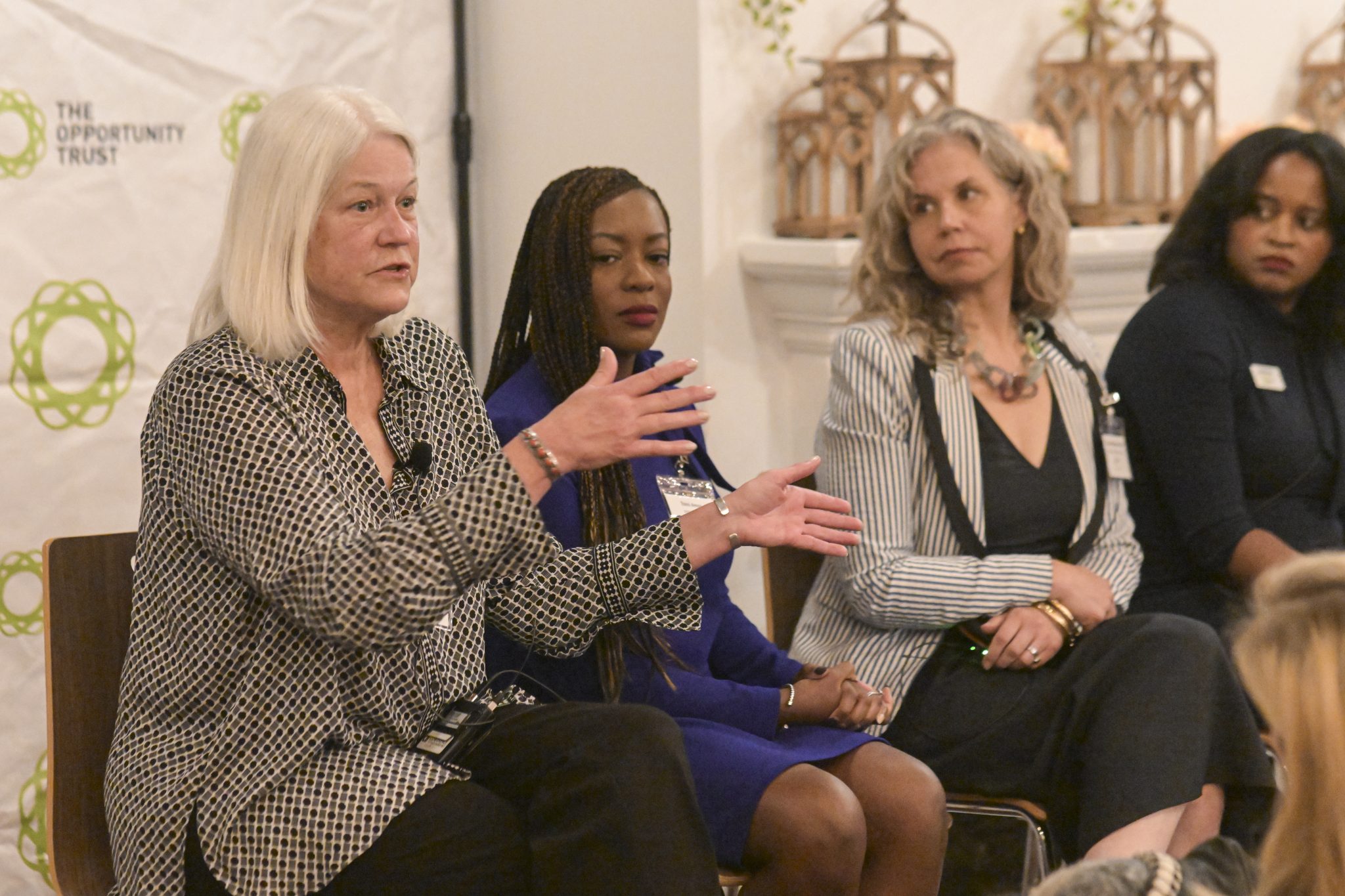
10/31/24
Learning Together: How Denver’s District-Charter Collaboration Could Inspire Change in St. Louis
The Takeaway
The Opportunity Trust remains committed to fostering collaboration and innovation across St. Louis schools. Inspired by the lessons from Denver, we’re focused on shaping a future where district and charter schools work hand-in-hand for the benefit of every student. Drawing inspiration from Denver’s educational transformation, we envision a future where public schools – charter and traditional – work together to enhance student outcomes.
At The Opportunity Trust’s Fall Community Dinner and Discussion, education leaders gathered to hear the powerful story of Denver’s educational transformation from panelists who were instrumental in the change. Alyssa Whitehead-Bust, Tomi Amos, Anne Rowe, and Dr. Brandi Chin shared the lessons they learned during Denver’s decade-long journey of reform—one that could guide St. Louis through its own challenges today.
Alyssa Whitehead-Bust, Founder of Attuned Education Partners and former Chief Academic and Innovation Officer for Denver Public Schools, spoke of the immense challenges that Denver faced at the outset: “Far too few kids were reading on grade level, doing math on grade level, and graduating. Our college admittance rates were really low, and high school graduation rates were really, really low.”
It was a sobering reality check for Denver. However, rather than allowing these failures to divide school systems further, Denver leaders forged a unified vision.
“We tried really hard to blur the lines between charter schools, innovation schools, and what we call district-run schools,” Whitehead-Bust shared, reflecting on Denver’s efforts to unify all schools under one system, focused solely on student success. “We did that through unified enrollment, unified accountability, and shared obligation to serving all kids.” This approach can serve as a guiding principle for St. Louis, encouraging all educational institutions to collaborate rather than compete, ultimately prioritizing student success.

The flexibility and accountability were helpful. I would not have been able to get the results that I got as a leader in the traditional district model. I worked in an innovation zone. Innovation zones had legislation that allowed for flexibility within a traditional district model. So, we were able to extend our school day, extend our school year, and do what we needed to do based on what our kids needed. That resulted in us accelerating student outcomes.
Dr. Brandi Chin, Partner at The Opportunity Trust and founding School Director of the Denver School Science and Technology

Denver’s approach was not just about policy changes—it was about bringing leaders together to create solutions for their students.
“We brought charter leaders, innovation leaders, district senior leaders, and district school leaders into the same conversations to help co-create all of the structures and policies we were working on,” Whitehead-Bust continued, emphasizing that they also centralized accountability and unified enrollment systems to ensure all schools were playing by the same rules.
Anne Rowe, who served on Denver Public Schools Board of Education during this time, explained how the governance structure was a crucial piece of the transformation. “We flipped the model on its head,” she said, describing how Denver moved away from a top-down approach and instead empowered school leaders and communities to make decisions. “Discomfort can help create the change,” she noted, acknowledging the challenges they faced from those uncomfortable with the shift.
Tomi Amos is currently the Chief Executive Officer at KIPP Colorado Schools. She previously served as the Executive Director of Northeast Denver Innovation Zone in Denver Public Schools, and the Principal Consultant of Turnaround Support for the Colorado Department of Education.
“Collaboration has been so powerful in Denver,” Amos shared. “It allowed us to learn from one another across governance types and really push outcomes for kids. It wasn’t about who your board is, how you’re governed or structured,” she said. “It was more about how we collaborate and partner to solve some of our toughest challenges.”
As the conversation shifted toward the future of St. Louis, the panelists underscored how the city could benefit from Denver’s hard-earned lessons.
“We had to make the choice that all parties were going to come to the table with students as their orientation and North Star,” Whitehead-Bust said. This student-centered approach drove Denver’s success and offers a model for St. Louis.
“There was always tension,” Rowe said. “That’s why you communicate with parents, teachers, educators, and the union to give them real information and then give them the ability to choose.”
“What has sustained the choice system is the flexibility that it provides for families to make a choice for their child,” Amos shared. “It requires us all to work together differently because your kid is my kid. The hope and possibility of our kids and our families and coming together and collaborating has been sustaining in the absence of a lot of things that used to exist.”
Follow us on LinkedIn for updates on our initiatives and how you can join us in this transformative work.











